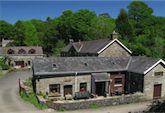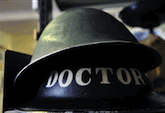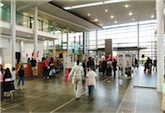The 1940s Swansea Bay Museum focuses on the three-night bombing raid of the south Wales city in February 1941, and shows what being at war meant for ordinary people on the home front. Dylan Thomas wrote about Swansea after the bombing raid in his broadcast: “Return Journey.” Much of Swansea was destroyed, with the only street in the city centre left more or less intact being Wind Street. Visitors to the attraction 1940s Swansea Bay can imagine for themselves what it was like to live then, by taking cover during an air raid, and walking along a reconstructed street. They can also track the course of RAF bombers.
The wonderfuly quirky 1940s museum was opened in 2005 by twin brothers John and Huw Thomas. Visitors can try authentic clothes and helmets on, walk through an indoor 1940s street and even have a spam sandwich and camp coffee in the gift shop. Houses, shops, a war operations room, railway station, air raid shelter and a pub have been created to help kick start the imagination of visitors. Huw Thomas said: “This is not a museum of glass cases and ‘do not touch’ signs. It is fun for all ages whatever the weather.”
The brothers want people to get a glimpse of life at the time through the displays, and think the museum appeals to visitors of all ages. “People who are old enough to remember the 1940s can share their recollections with us, whilst children and their parents are amazed at the heavy weight of many of the clothes and army helmets,” he said.
Collating the exhibition took the brothers three years. Black and white photos, showing the city before and after the bombing have been provided by the West Glamorgan Archive Service. Short films and displays show how local people coped with the devastation. Also on display are rations books, gas masks and military uniforms. The museum brings history alive and is ideal for children studying the war in history lessons… What was it like to live then? And what was on the menu? You can ”˜enjoy’ a spam sandwich and a camp coffee in the shop.
Further information may be obtained from the 1940s Swansea Bay Museum website.



